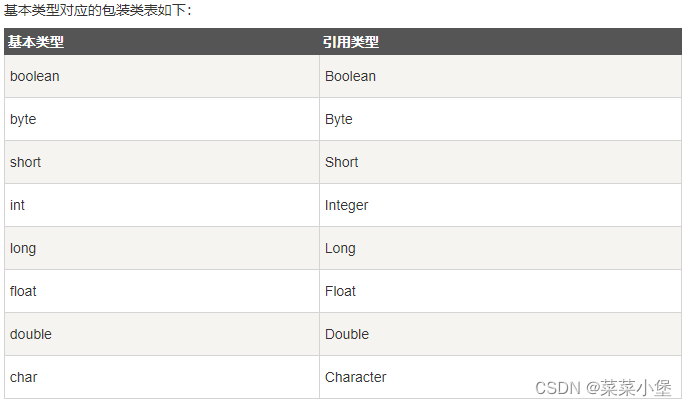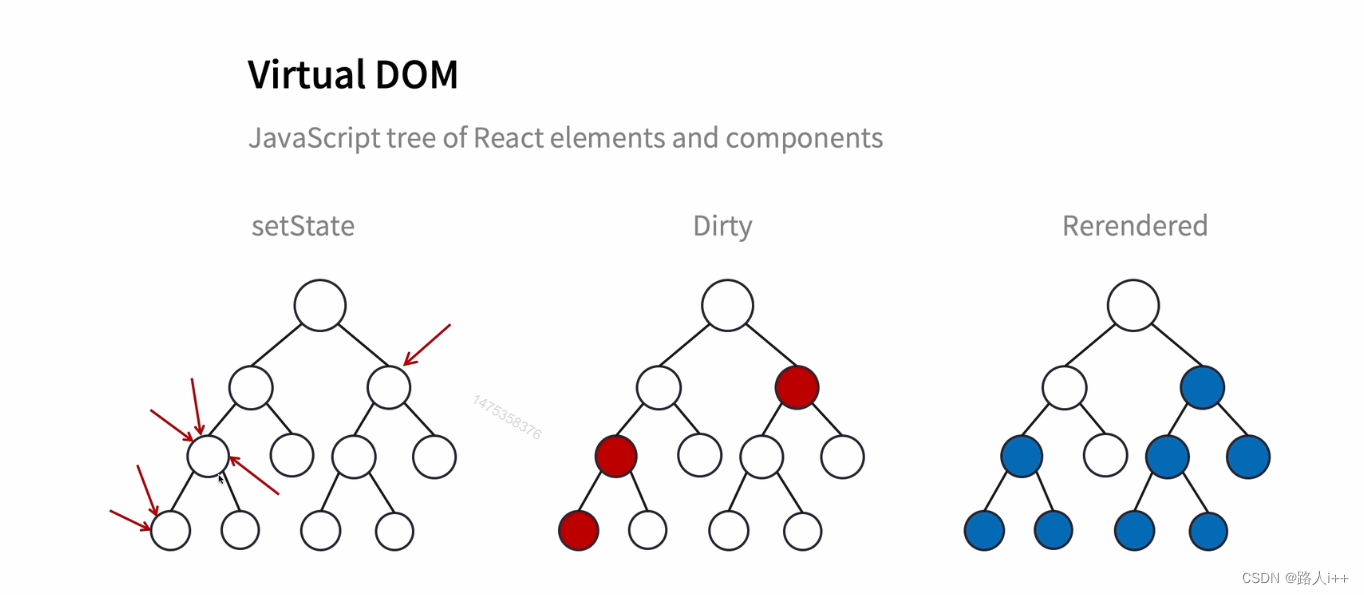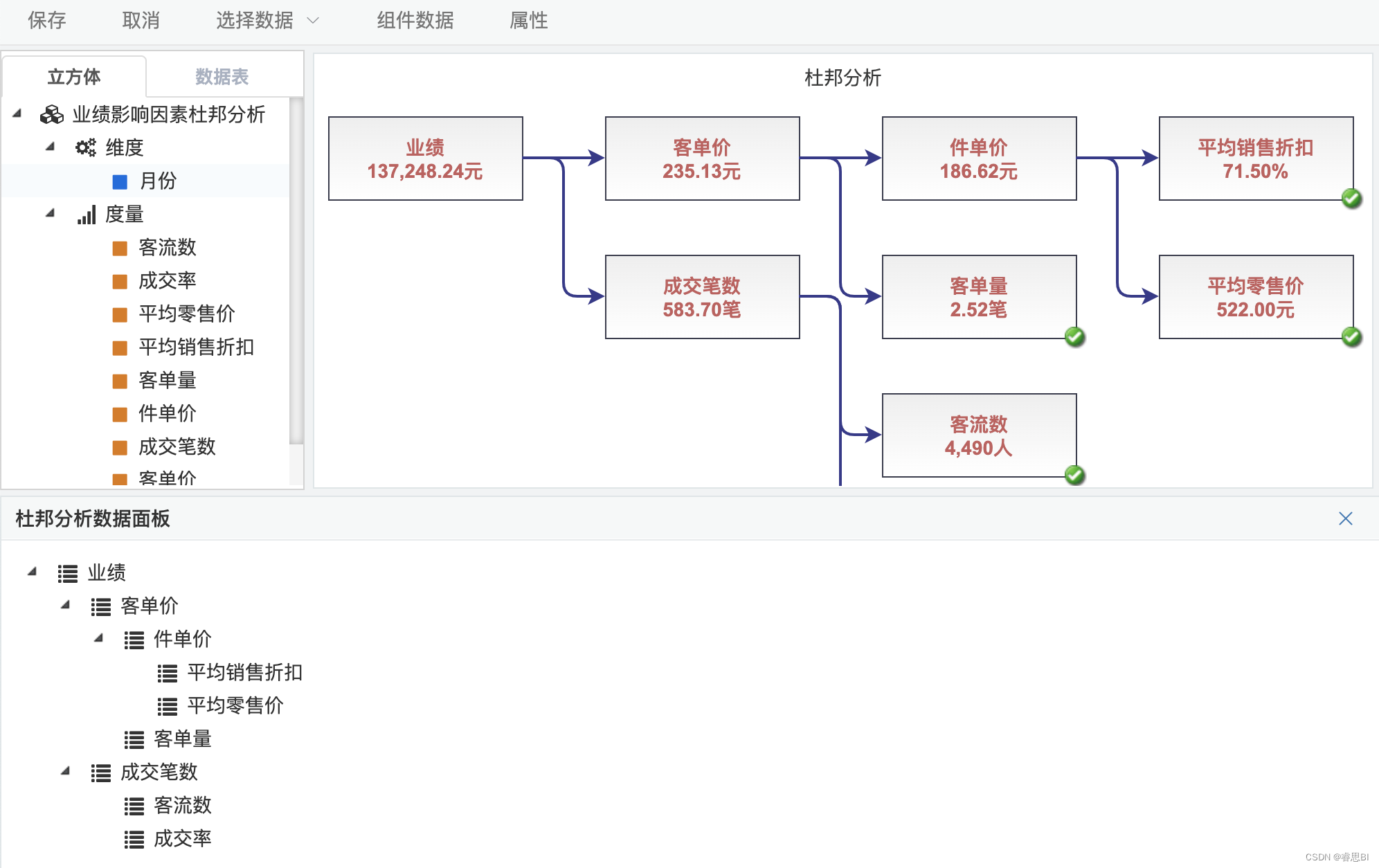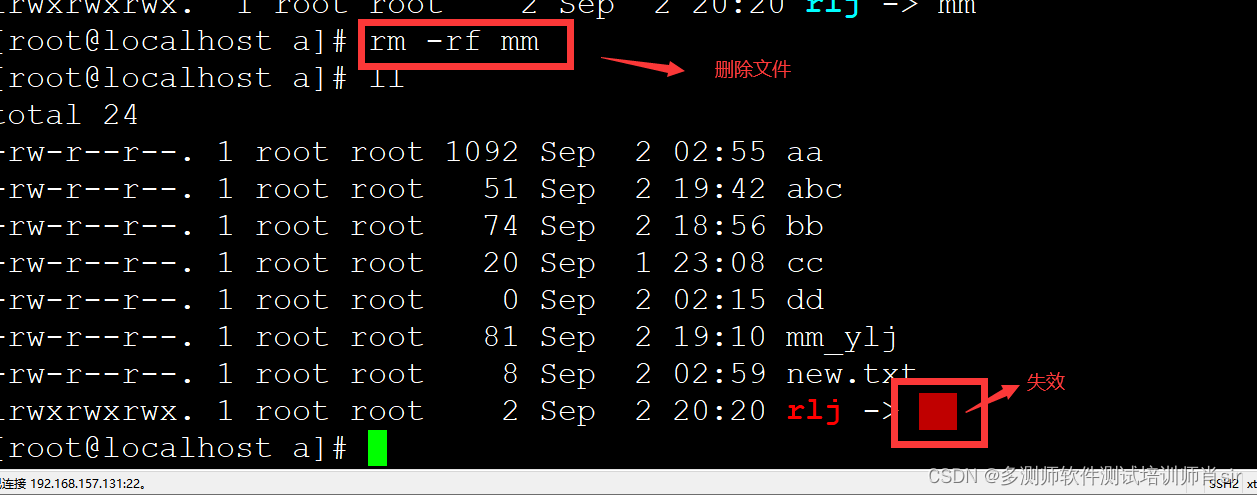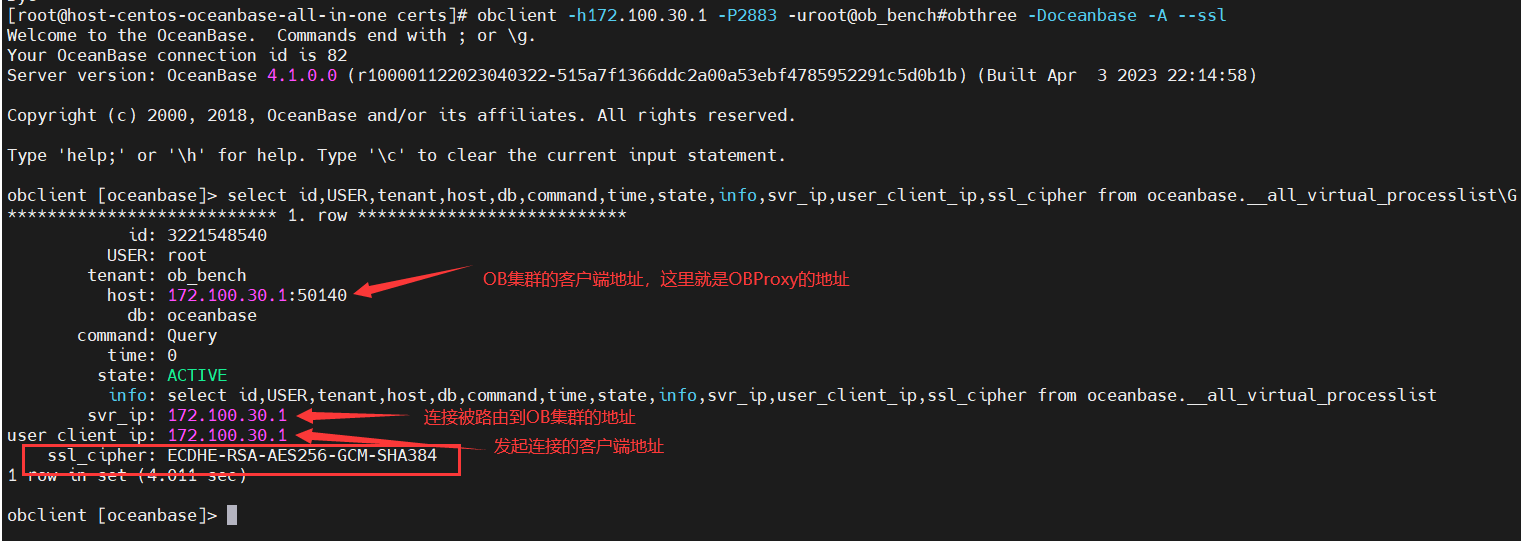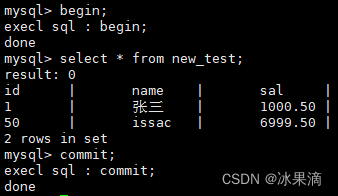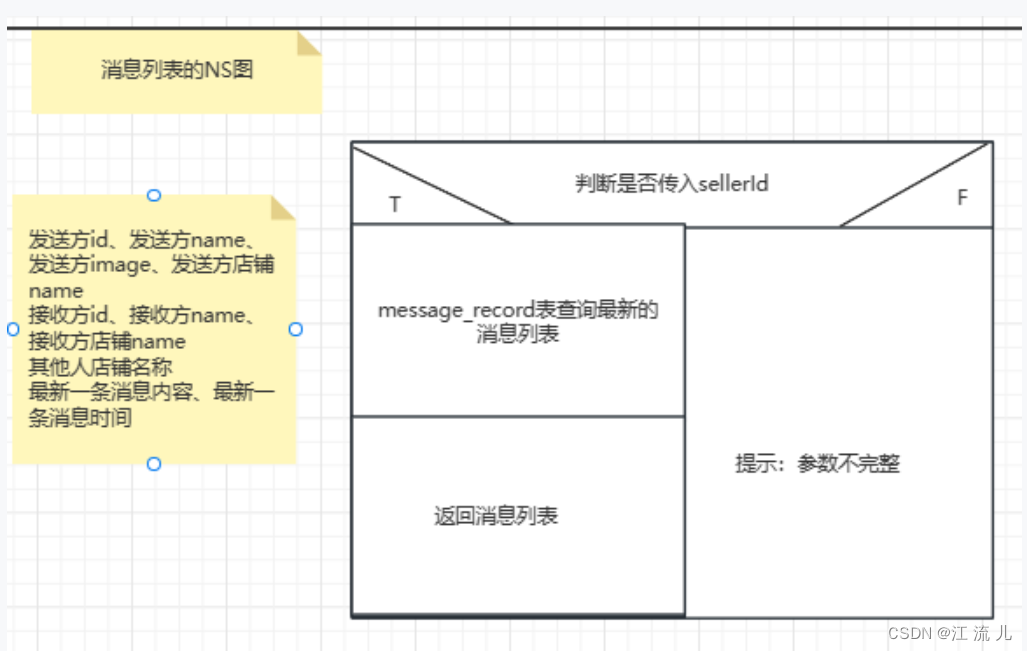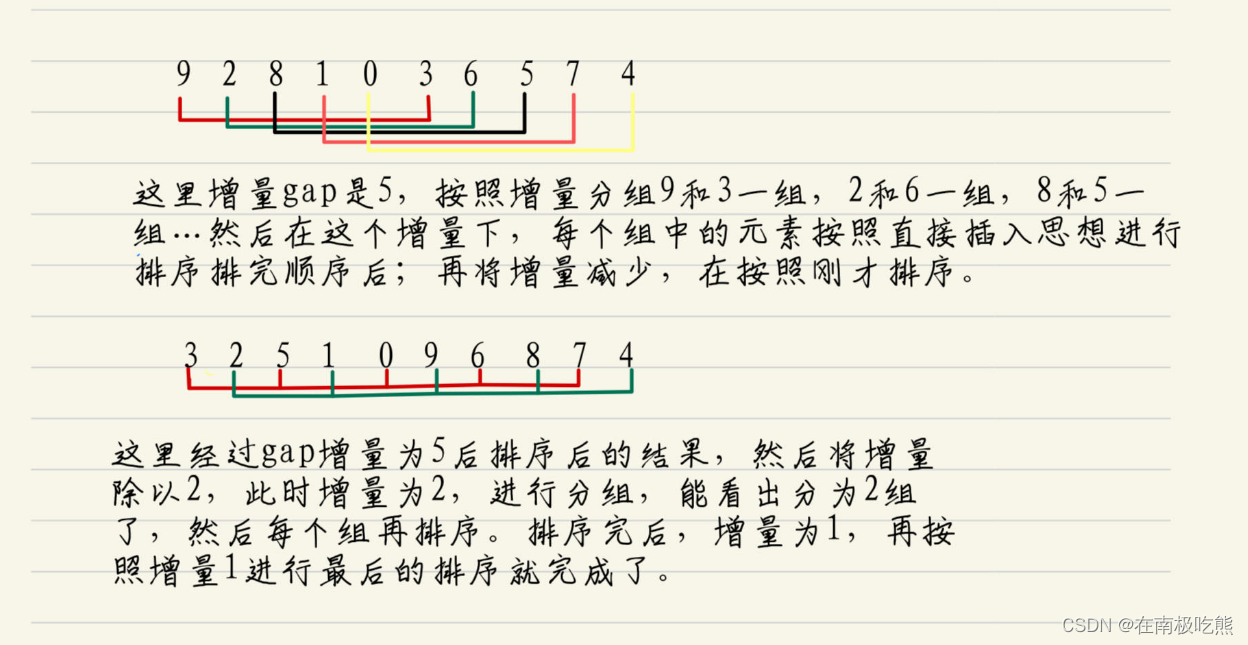目录
- 0 专栏介绍
- 1 Theta*算法局限性
- 2 Lazy Theta*算法原理
- 3 Theta* VS. Lazy Theta*
- 4 仿真实现
- 4.1 ROS C++实现
- 4.2 Python实现
- 4.3 Matlab实现
0 专栏介绍
🔥附C++/Python/Matlab全套代码🔥课程设计、毕业设计、创新竞赛必备!详细介绍全局规划(图搜索、采样法、智能算法等);局部规划(DWA、APF等);曲线优化(贝塞尔曲线、B样条曲线等)。
🚀详情:图解自动驾驶中的运动规划(Motion Planning),附几十种规划算法
1 Theta*算法局限性
Theta*的运行瓶颈在于,每次扩展节点 v v v的邻节点 w w w时,都需要对 p a r e n t ( v ) \mathrm{parent}(v) parent(v)和 w w w进行一次Bresenham视线检测。然而,大部分邻节点最终不会被扩展,大量应用在视线检测上的计算资源被浪费。

Theta*的变种算法Lazy Theta*算法通过延迟评估技术提升Theta*的路径搜索速度。实验证明,在26邻域三维地图上,Lazy Theta*的视线检查数量比Theta*减少了一个数量级,且路径长度没有增加。
2 Lazy Theta*算法原理
Lazy Theta*在扩展节点 v v v的邻节点 w w w时,默认 p a r e n t ( v ) \mathrm{parent}(v) parent(v)和 w w w间存在视线,而无需对 p a r e n t ( v ) \mathrm{parent}(v) parent(v)和 w w w进行碰撞检测。当以节点 w w w为基础开始扩展时,才正式对它与父节点 p a r e n t ( v ) \mathrm{parent}(v) parent(v)计算视线。若视线存在,则无需更新信息(path2);若视线不存在,则在邻域重新选择父节点(path1)。
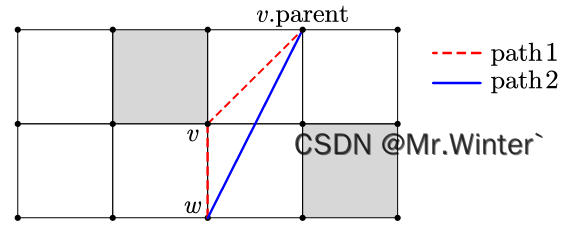
Lazy Theta*的算法流程如下所示。
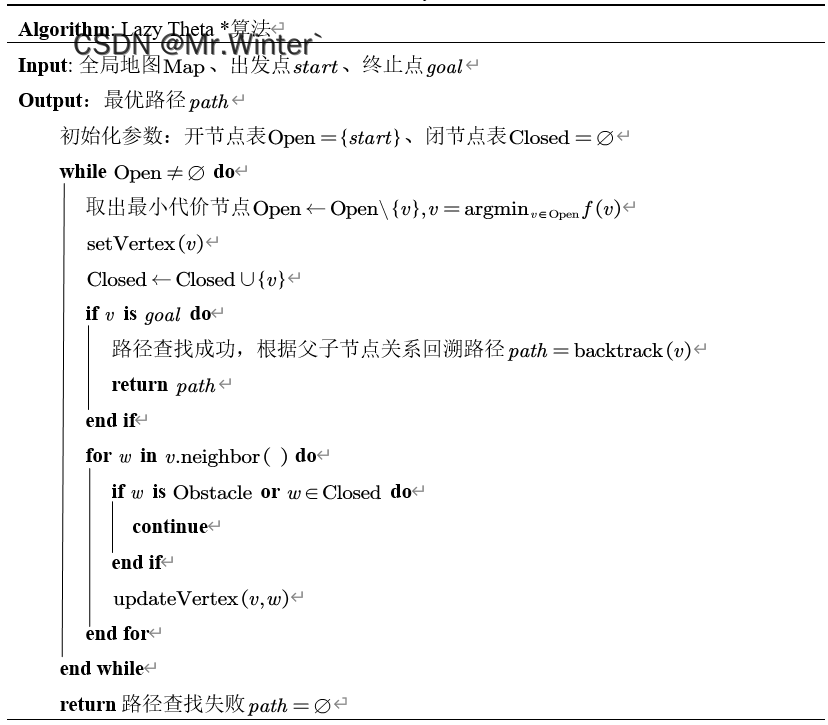
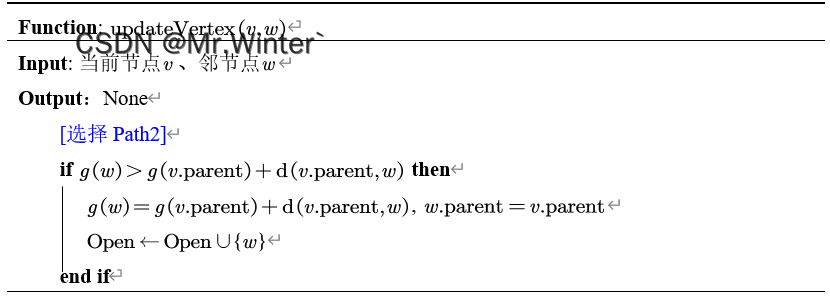

3 Theta* VS. Lazy Theta*
Lazy Theta*牺牲了一定的路径优度,因为节点 v v v与其父节点间可能存在障碍,使节点 v v v的 g g g值往往小于真实值,导致从Open表中取出的优先节点可能并非最优的,所以Lazy Theta*的规划路径可能会更长。同时,当判定节点 与其父节点间存在障碍后, v v v的父节点只能从邻域中更新,可能产生锯齿。Theta*与Lazy Theta*的对比实例如下
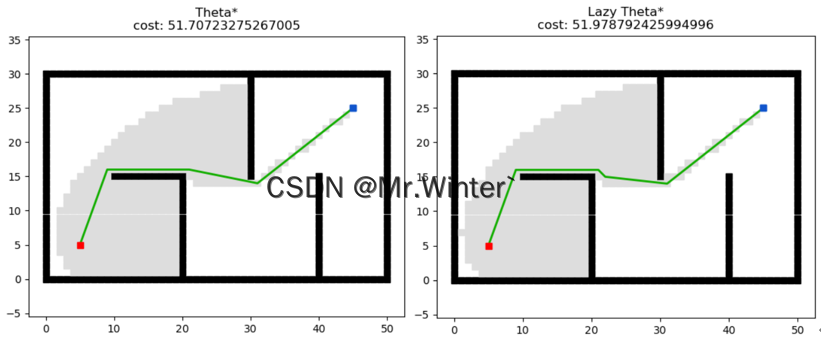
4 仿真实现
4.1 ROS C++实现
核心代码如下
bool LazyThetaStar::plan(const unsigned char* global_costmap, const Node& start, const Node& goal,std::vector<Node>& path, std::vector<Node>& expand)
{// initializecosts_ = global_costmap;closed_list_.clear();path.clear();expand.clear();motion_ = getMotion();// push the start node into open liststd::priority_queue<Node, std::vector<Node>, compare_cost> open_list;open_list.push(start);// main processwhile (!open_list.empty()){// pop current node from open listNode current = open_list.top();open_list.pop();_setVertex(current);if (current.g_ >= INFINITE_COST)continue;// current node does not exist in closed listif (closed_list_.find(current) != closed_list_.end())continue;closed_list_.insert(current);expand.push_back(current);// goal foundif (current == goal){path = _convertClosedListToPath(closed_list_, start, goal);return true;}// explore neighbor of current nodefor (const auto& m : motion_){// explore a new node// path 1Node node_new = current + m; // add the x_, y_, g_node_new.h_ = dist(node_new, goal);node_new.id_ = grid2Index(node_new.x_, node_new.y_);node_new.pid_ = current.id_;// current node do not exist in closed listif (closed_list_.find(node_new) != closed_list_.end())continue;// next node hit the boundary or obstacleif ((node_new.id_ < 0) || (node_new.id_ >= ns_) || (costs_[node_new.id_] >= lethal_cost_ * factor_))continue;// get parent nodeNode parent;parent.id_ = current.pid_;index2Grid(parent.id_, parent.x_, parent.y_);auto find_parent = closed_list_.find(parent);if (find_parent != closed_list_.end()){parent = *find_parent;// path 2_updateVertex(parent, node_new);}open_list.push(node_new);}}return false;
}

4.2 Python实现
核心代码如下
def plan(self):# OPEN set with priority and CLOSED setOPEN = []heapq.heappush(OPEN, self.start)CLOSED = []while OPEN:node = heapq.heappop(OPEN)# set vertex: path 1try:...except:pass# exists in CLOSED setif node in CLOSED:continue# goal foundif node == self.goal:CLOSED.append(node)return self.extractPath(CLOSED), CLOSEDfor node_n in self.getNeighbor(node): # exists in CLOSED setif node_n in CLOSED:continue# path1node_n.parent = node.currentnode_n.h = self.h(node_n, self.goal)try:p_index = CLOSED.index(Node(node.parent))node_p = CLOSED[p_index]except:node_p = Noneif node_p:# path2self.updateVertex(node_p, node_n)# goal foundif node_n == self.goal:heapq.heappush(OPEN, node_n)break# update OPEN setheapq.heappush(OPEN, node_n)CLOSED.append(node)return ([], []), []
4.3 Matlab实现
核心代码如下
while ~isempty(OPEN)% popf = OPEN(:, 3) + OPEN(:, 4);[~, index] = min(f);cur_node = OPEN(index, :);OPEN(index, :) = [];% set vertex: path 1p_index = loc_list(cur_node(5: 6), CLOSED, [1, 2]);...% exists in CLOSED setif loc_list(cur_node, CLOSED, [1, 2])continueend% update expand zoneif ~loc_list(cur_node, EXPAND, [1, 2])EXPAND = [EXPAND; cur_node(1:2)];end% goal foundif cur_node(1) == goal(1) && cur_node(2) == goal(2)CLOSED = [cur_node; CLOSED];goal_reached = true;cost = cur_node(3);breakendif (cur_node(1) ==17) &&(cur_node(2) == 26)cur_node(1);end% explore neighborsfor i = 1:motion_num% path 1node_n = [cur_node(1) + motion(i, 1), ...cur_node(2) + motion(i, 2), ...cur_node(3) + motion(i, 3), ...0, ...cur_node(1), cur_node(2)];node_n(4) = h(node_n(1:2), goal);% exists in CLOSED setif loc_list(node_n, CLOSED, [1, 2])continueend% obstacleif map(node_n(1), node_n(2)) == 2continueendp_index = loc_list(cur_node(5: 6), CLOSED, [1, 2]);if p_indexnode_p = CLOSED(p_index, :);elsenode_p = 0;endif node_p ~= 0node_n = update_vertex(node_p, node_n);end% update OPEN setOPEN = [OPEN; node_n];endCLOSED = [cur_node; CLOSED];
end

完整工程代码请联系下方博主名片获取
🔥 更多精彩专栏:
- 《ROS从入门到精通》
- 《Pytorch深度学习实战》
- 《机器学习强基计划》
- 《运动规划实战精讲》
- …


